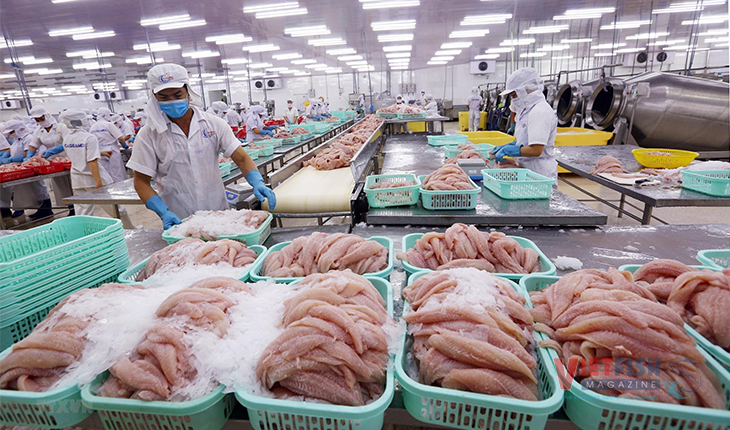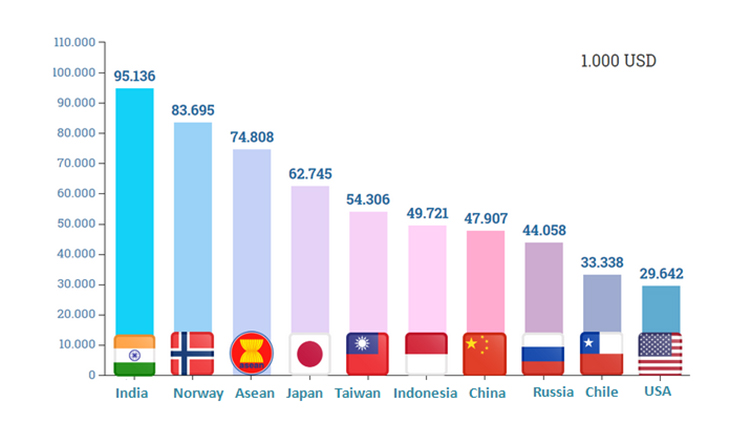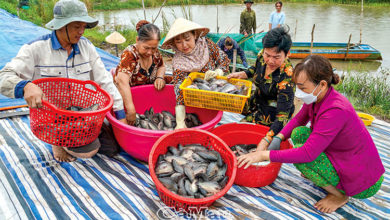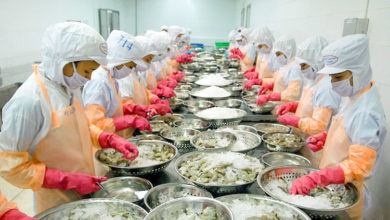Seafood exports hit $8.33 billion in ten months: optimism for $10 billion goal
Despite numerous challenges, Vietnam's seafood exports are on track to reach the $10 billion target in 2024.
Strong October performance
According to the Ministry of Agriculture and Rural Development (MARD), seafood production in October reached nearly 871,000 tons, a 2.6% increase compared to the same period in 2023. Over the first ten months of 2024, total seafood output rose to almost 7.9 million tons, up 2.5% year-on-year. This included nearly 3.3 million tons from capture fisheries (up 0.6%) and over 4.6 million tons from aquaculture (up 3.8%).
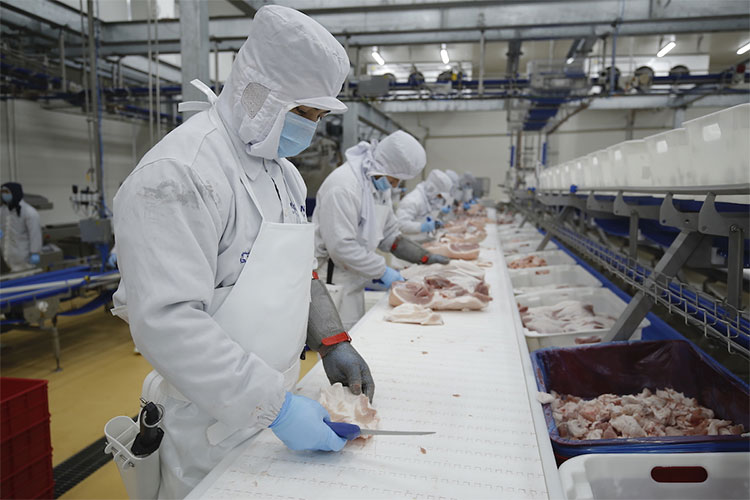
Export turnover for the period reached USD 8.33 billion, a 12% increase compared to last year. Shrimp exports accounted for USD 3.23 billion (up 13.9%), while pangasius contributed USD 1.54 billion (up 8.7%). Notably, October exports alone hit USD 1.1 billion, marking a 31% year-on-year rise. This was the first time since June 2022 that monthly seafood exports surpassed USD 1 billion—a significant achievement for the industry, according to the Vietnam Association of Seafood Exporters and Producers (VASEP).
The United States, China, and Japan remain Vietnam’s top seafood markets. With sustained growth in recent months, the industry is optimistic about achieving and possibly exceeding its USD 10 billion export target.
Deputy Minister of MARD Phung Duc Tien noted that with USD 8.33 billion achieved by October, the remaining two months require only USD 900 million per month to meet the goal. “Despite significant challenges, including Typhoon No. 3, we are confident in achieving the target. This is a pivotal year as we gear up to close the 2021–2025 period,” Tien remarked.
Infrastructure development is the key
While the seafood sector has shown resilience, challenges persist. VASEP highlighted ongoing difficulties, including tax and regulatory pressures in key markets, climate change impacts on raw materials, and growing competition in the region.
Shrimp and pangasius exporters are grappling with domestic raw material shortages despite peak import seasons. Companies need to maximize opportunities by leveraging reserves and diversifying raw material sources.
For tuna and cephalopod exports, growth has slowed compared to the first half of the year. This is partly due to delays caused by new regulations under Decree No. 37/2024/ND-CP, which have disrupted seafood traceability processes at ports.
Skipjack tuna, essential for canned processing, has faced severe disruptions. Fishermen are hesitant to operate due to size restrictions or are unable to sell catches to processing facilities.
Meanwhile, the capture fisheries sector awaits the results of the EU’s November 2024 inspection under its IUU (illegal, unreported, and unregulated) fishing framework, hoping for a positive outcome.
VASEP advised businesses to enhance competitiveness by improving product quality and expanding export markets.
Deputy Minister Phung Duc Tien emphasized the importance of maintaining growth momentum for the remainder of the year. Localities must strictly adhere to Directive No. 32-CT/TW, issued on April 10, 2024, to combat IUU fishing and ensure sustainable development. Key priorities include reducing capture production, restoring post-typhoon operations, diversifying aquaculture species, and addressing infrastructure gaps. “Infrastructure is a critical issue that still lacks sufficient attention,” Tien concluded.
VFM


